Short exposure to cold atmospheric plasma induces senescence in human skin fibroblasts and adipose mesenchymal stromal cells
- PMID: 31209329
- PMCID: PMC6572822
- DOI: 10.1038/s41598-019-45191-2
Short exposure to cold atmospheric plasma induces senescence in human skin fibroblasts and adipose mesenchymal stromal cells
Abstract
Cold Atmospheric Plasma (CAP) is a novel promising tool developed in several biomedical applications such as cutaneous wound healing or skin cancer. Nevertheless, in vitro studies are lacking regarding to CAP effects on cellular actors involved in healthy skin healing and regarding to the mechanism of action. In this study, we investigated the effect of a 3 minutes exposure to CAP-Helium on human dermal fibroblasts and Adipose-derived Stromal Cells (ASC) obtained from the same tissue sample. We observed that CAP treatment did not induce cell death but lead to proliferation arrest with an increase in p53/p21 and DNA damages. Interestingly we showed that CAP treated dermal fibroblasts and ASC developed a senescence phenotype with p16 expression, characteristic morphological changes, Senescence-Associated β-galactosidase expression and the secretion of pro-inflammatory cytokines defined as the Senescence-Associated Secretory Phenotype (SASP). Moreover this senescence phenotype is associated with a glycolytic switch and an increase in mitochondria content. Despite this senescence phenotype, cells kept in vitro functional properties like differentiation potential and immunomodulatory effects. To conclude, we demonstrated that two main skin cellular actors are resistant to cell death but develop a senescence phenotype while maintaining some functional characteristics after 3 minutes of CAP-Helium treatment in vitro.
Conflict of interest statement
The authors declare no competing interests.
Figures

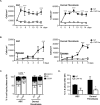
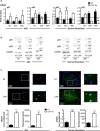
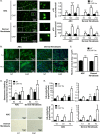
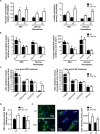
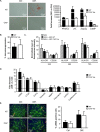
Similar articles
-
Rapamycin inhibits the secretory phenotype of senescent cells by a Nrf2-independent mechanism.Aging Cell. 2017 Jun;16(3):564-574. doi: 10.1111/acel.12587. Epub 2017 Mar 31. Aging Cell. 2017. PMID: 28371119 Free PMC article.
-
Moderate hyperoxia induces senescence in developing human lung fibroblasts.Am J Physiol Lung Cell Mol Physiol. 2019 Nov 1;317(5):L525-L536. doi: 10.1152/ajplung.00067.2019. Epub 2019 Aug 14. Am J Physiol Lung Cell Mol Physiol. 2019. PMID: 31411059 Free PMC article.
-
Cooperation between p21 and Akt is required for p53-dependent cellular senescence.Aging Cell. 2017 Oct;16(5):1094-1103. doi: 10.1111/acel.12639. Epub 2017 Jul 9. Aging Cell. 2017. PMID: 28691365 Free PMC article.
-
Emerging role of NF-κB signaling in the induction of senescence-associated secretory phenotype (SASP).Cell Signal. 2012 Apr;24(4):835-45. doi: 10.1016/j.cellsig.2011.12.006. Epub 2011 Dec 11. Cell Signal. 2012. PMID: 22182507 Review.
-
Translational Control during Cellular Senescence.Mol Cell Biol. 2021 Jan 25;41(2):e00512-20. doi: 10.1128/MCB.00512-20. Print 2021 Jan 25. Mol Cell Biol. 2021. PMID: 33077499 Free PMC article. Review.
Cited by
-
Cellular senescence of renal tubular epithelial cells in acute kidney injury.Cell Death Discov. 2024 Feb 5;10(1):62. doi: 10.1038/s41420-024-01831-9. Cell Death Discov. 2024. PMID: 38316761 Free PMC article. Review.
-
Central metabolism of functionally heterogeneous mesenchymal stromal cells.Sci Rep. 2019 Oct 28;9(1):15420. doi: 10.1038/s41598-019-51937-9. Sci Rep. 2019. PMID: 31659213 Free PMC article.
-
Cellular senescence: the good, the bad and the unknown.Nat Rev Nephrol. 2022 Oct;18(10):611-627. doi: 10.1038/s41581-022-00601-z. Epub 2022 Aug 3. Nat Rev Nephrol. 2022. PMID: 35922662 Free PMC article. Review.
-
Orthopaedic applications of cold physical plasma.EFORT Open Rev. 2023 Jun 8;8(6):409-423. doi: 10.1530/EOR-22-0106. EFORT Open Rev. 2023. PMID: 37289098 Free PMC article. Review.
-
Characterization of pig skeletal muscle transcriptomes in response to low temperature.Vet Med Sci. 2023 Jan;9(1):181-190. doi: 10.1002/vms3.1025. Epub 2022 Dec 8. Vet Med Sci. 2023. PMID: 36480456 Free PMC article.
References
Publication types
MeSH terms
Substances
LinkOut - more resources
Full Text Sources
Other Literature Sources
Research Materials
Miscellaneous

